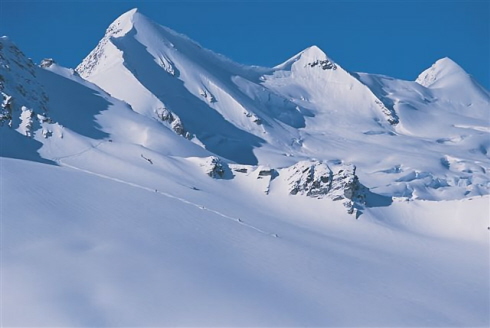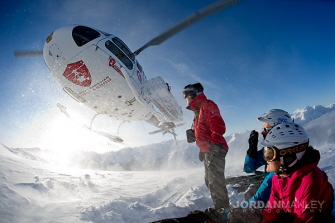
Heli-skiing. It seems like something only top skiers do. Right? They’ve achieved a certain elite skier status that allows them access to some of the most remote peaks in the world. Right?
Truth is, heli-skiing is not as extreme as you may think it is. In fact, if you’re a decent skier, it’s completely within reach.
How so? We spoke to Rob Dalinghause, a ski guide and operations manager at Great Canadian Heli-Skiing to find out just what it takes to have this extraordinary experience. Rob knows a thing or two about the sport, having been guiding for 19 years now. He’s also married to another ski guide.
Great Canadian Heli-Skiing is located between Golden and Revelstoke, British Columbia in the heart of the world's heli-skiing powder belt. They get at least 46 feet of snow a year—and it’s light, dry POWDER!
Read through our interview with Rob and you might just find yourself rethinking this winter’s ski plans.
FarewellTravels: Well for starts, Rob, how competent a skier do you have to be to go heli-skiing?
Rob: Basically, you need to be a strong intermediate to get the most enjoyment of out if. Lots of people think it’s always powder, but it’s not. It can be highly variable and the person must be able to handle changing conditions.
FarewellTravels: How fit should a skier be?
Rob: The more fit you are, the better experience you’ll have. You’re also less likely to get an injury.
FarewellTravels: What about the terrain? Can you tell us about the experience of skiing on terrain that’s been accessed by helicopter?
Rob: Well, it’s totally weather-dependent of course. Mother Nature dictates. If it’s conducive to going to the very top, we’ll go. Our job is to take people to the best skiing. Each day, we determine the altitude we’ll ski at based on visibility, snow stability and quality. If we know a certain elevation band is windy, we’ll go to a lower elevation. In general, our runs are at an altitude on average between 3000 and 1833 meters (9000 and 5500 feet).
FarewellTravels: How big/small are your groups?
Rob: We pride ourselves in keeping our groups small. Generally, there are four skiers and a guide.
FarewellTravels: How many runs a day will skiers get in?
Rob: On typical days, between 8 and 12. On the training day, usually just 6. It’s hard to pin down though. On the longer days in the spring, we’ve done 16-20.

FarewellTravels: What if a skier panics and decides against going once he/she is in the helicopter?
Rob: I’ve never had that happen before. I have seen anxiety certainly, but there is training involved so people do know what to expect before getting in the helicopter.
FarewellTravels: What does the training entail?
Rob: A lot of it has to do with safety-- helicopter and skiing safety. Skiers learn what to do if involved in an avalanche and they are given a transceiver to wear.
FarewellTravels: How long would you recommend going on a heli-ski vacation?
Rob: Traditionally, it’s a week-long affair. Once you have the training, you want to get out and do it. But you can go for 2, 3, 4, 5 days—whatever duration you’d like.
FarewellTravels: What kind of helicopters do you use?
Rob: We have Euro-copter A Stars, which are known for being reasonably quiet and smooth. Inside, they’re not cramped like some helicopters and you can see out quite well. Also, you’re not sitting backwards.
FarewellTravels: What kind of skis do you use?
Rob: We use Rocker skis, which make people more comfortable right off the bat. You don’t have to be overly athletic to make it work.
FarewellTravels: Any unusual stories?
Rob: Many, but here's one. Once when skiing down, in my peripheral vision, I noticed something was cruising near my head but it wasn’t a bird. It was flying squirrel going down the hill with me. Then it darted off into the woods. When you’re exploring terrain you don’t get  to all the time, you have all sorts of special moments. to all the time, you have all sorts of special moments.
FarewellTravels: What do you like most about what you do?
Rob: Watching people who are anxious and then seeing their reaction when it all comes together.
FarewellTravels: Once you’ve heli-skied, is everything after going to be a letdown?
Rob: I think heli-skiing opens up new worlds for people, giving them a whole new appreciation. Many start to backcountry ski. They want to get away from the crowds.
Photos: All of the photos were provided by Great Canadian Heli-Skiing. The photo at the top of the page was taken by Sue Gould; the helicopter and downhill photos were taken by Jordan Manley. Rob Dalinghause, the guide we interviewed, is pictured in the red jacket.
|

